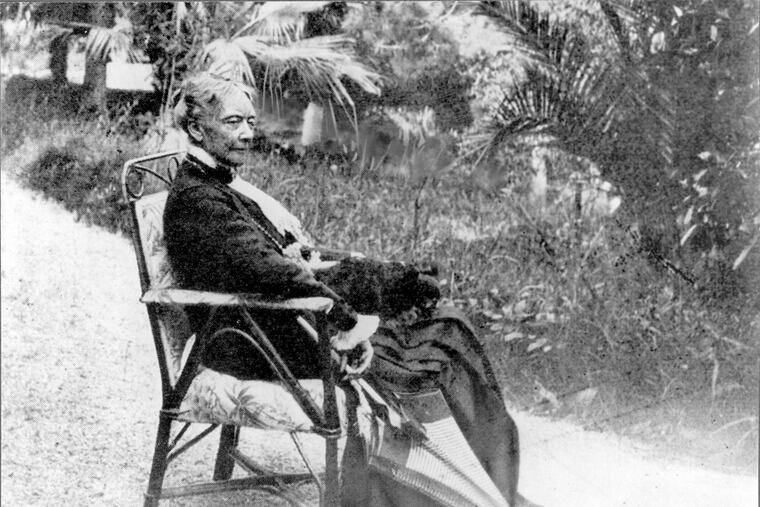Mary Cassatt painted two works for the Pennsylvania State Capitol. Why she never sent them remains a mystery.
But thanks to an ongoing Philadelphia Museum of Art exhibit, we can now see the pieces that never made their way to Harrisburg.

At the Pennsylvania State Capitol, in a decorated room in the Lieutenant Governor’s Suite, two round niches high on the wall have sat empty for more than a century. They were intended to showcase artworks by renowned Pittsburgh-born painter Mary Cassatt. She finished two paintings for the building in 1905, but she never sent them to Harrisburg.
Why? The working theory passed down over generations maintains that Cassatt walked away from the commission because of corruption in Harrisburg.
Cassatt painted Mother and Child and Mother and Two Children — circular works called tondos, a style reminiscent of the Renaissance — for the ladies’ reception room, a lounge where women would wait while their husbands conducted state business. The Pennsylvania Academy of the Fine Arts alum was living in France at the time, where she became the sole American — and one of the few women — in the impressionist movement.
When Philadelphia architect Joseph Miller Huston designed the Pennsylvania State Capitol, he envisioned a palace of art by Pennsylvanians for the seat of government. Cassatt was one of the most prominent artists that came to his mind. He also enlisted Philadelphia painters Violet Oakley, Edwin Austin Abbey, and others whose works remain on view.
Huston later was one of nine people involved in the Capitol graft scandal, convicted of defrauding the state by accepting bribes and inflating the prices of construction materials and labor. Completed in 1906, the building cost $13 million, but subsequent investigations found that Huston, contractor John Sanderson, and others had overcharged Pennsylvania by some $9 million. (Oakley, Abbey, and other artists said they were unaware of the corruption and were not implicated.)
There’s no documented evidence to prove that Cassatt refused to ship the paintings to Pennsylvania after learning of the burgeoning scandal, but that has been the prevailing urban legend, explained Jason Wilson, historian of the Pennsylvania Capitol Preservation Committee.
“We don’t know exactly why they weren’t installed,” said Wilson. “Supposedly Mary Cassatt had been offered or asked to pay a kickback to some of the folks that were involved in the graft scandal. There’s really no proof of that. There were other artists too, and none of them ever indicated that they were [asked the same].”
Wilson is careful not to speculate about what happened, but he believes it’s likely Cassatt sought to avoid any involvement as rumors of the scandal spread. “Maybe it’s that her brother [Alexander Cassatt, president of the Pennsylvania Railroad] said, ‘You don’t want anything to do with the Capitol because something fishy is going on,’” he said. “I think that’s why she walked away, but I don’t know. It might have just been like, ‘Oh, I smell a rat here.’”
Instead of arriving in Harrisburg, the two paintings remained in Cassatt’s studio for a decade before she sold one and gave the other to her family living in Philadelphia. The two artworks are now on display in the Philadelphia Museum of Art’s exhibit “Mary Cassatt at Work,” running through Sept. 8.
Mother and Two Children, on loan from the Westmoreland Museum of American Art in Greensburg, Pa., was particularly special to Cassatt, according to Jennifer Thompson, the Art Museum’s curator of European painting and sculpture, who cocurated the exhibit.
“She spoke of the painting in the Westmoreland collection as being one of her very best, and when it becomes clear that she’s not sending it to the Capitol, she works very hard to find a good home for it,” said Thompson. “She sold it to Harris Whitmore Jr. of Naugatuck, Conn., for $5,000, which, according to the correspondence, indicates that’s one of the highest prices that she ever charged for her works. That reinforces the importance that this work had for her and how proud or pleased she was with it.”
After a century apart, the pair of paintings have been reunited, hanging high in the museum for the people of Pennsylvania to enjoy, as originally intended.